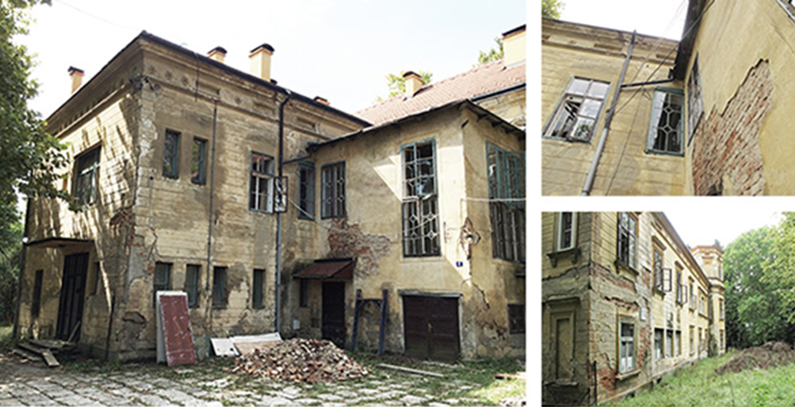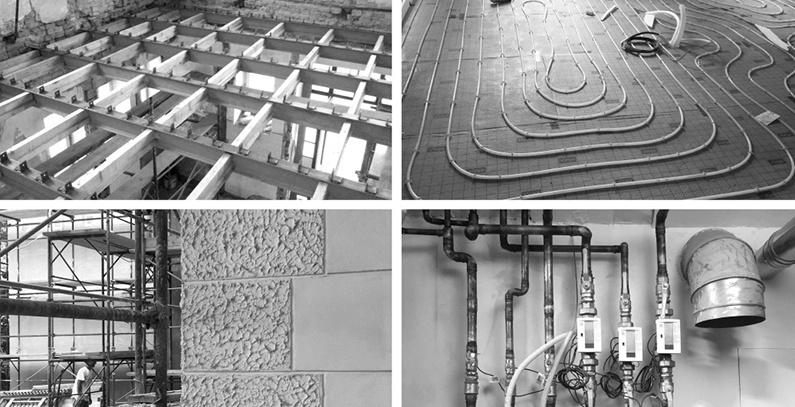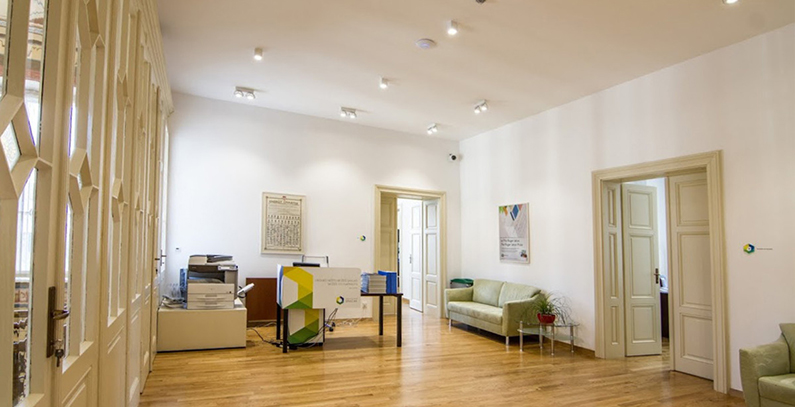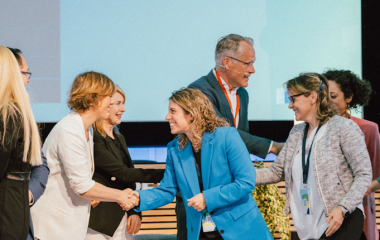
Photo: Energy Center Bračak
- Project: Revitalization and transformation of Bračak castle into energy-efficient and sustainable energy center
- Country: Croatia
- Financing: Fund for Environmental Protection and Energy Efficiency of Croatia (FZOEU) and EU Structural Funds
- Implementation: Regional Energy Agency Northwestern Croatia (REGEA) and Krapinsko-zagorska županija
- Implementation period: preparations and implementation of project 6 years, reconstruction 1.4 years
Context
The Bračak castle lies in the Krapinsko-zagorska županija (district), in northwester Croatia. It was built in 1889. Following World War 2, a children’s hospital for lung diseases was housed in it. The castle was abandoned in 2007 when a new hospital was built nearby. It is a listed property protected as part of the country’s cultural heritage.
REGEA started preparations in 2011 for the reconstruction project with the Krapinsko-zagorska županija preparing the paperwork for the reconstruction of the property and its transformation into an energy center in 2012. Work on the restoration and revitalization of the Bračak castle started in 2015.
The Energy Center Bračak was opened on March 17, 2017.
The total value of the project stands at EUR 3.2 million, with EUR 2.8 million coming from the FZOEU under a decision by the Croatian government while EUR 400.000 came from EU funds and the Krapinsko-zagorska županija budget.
Technical requirements
Heating insulation 20 to 30 centimeters thick made from stone wool was put up on the inner sides of the outer walls during the energy renewal following reconstruction. Insulation of 30 centimeters was put up in the attic. Insulation made of polystyrene (XPS) was laid on the floors in the cellars at a thickness of 12 centimeters as well as on the ground level walls.

Photo 1: Bračak castle prior to the reconstruction
The project included installation of:
- energy efficient outer windows and doors
- 80 kW heating boiler
- high-efficiency VRV cooling system of an installed power of 95.2 kW
- high-efficiency ventilation system with recuperation
- gas-powered micro-cogeneration system producing 6 kW of electric power and 14.9 kW of heating power to heat water.
A central monitoring and management system was installed for the heating, cooling and ventilation system (HVAC) and lighting. Half the lighting are LED lights and half are fluo T5.
The center also has a medium speed charger for two electric cars of a power of 2×22 kW and rain water collector used to wash out the sewage.
Specific requirements
The latest technical solutions were used when restoring the building but bearing in mind that the cultural heritage aspect had to be preserved.

Photo 2: Reconstruction works on Bračak castle
In order to preserve the outer appearance of the building, the insulation of the outside walls was put on the inner walls with an active steam barrier which allows the walls to dry from the inside.
The restoration of the castle included a full reconstruction of the facade, the murals and architectural ornaments.
Energy savings and other benefits
The Bračak castle went from an E class energy grade prior to reconstruction to a B and C with annual savings of 70 percent of heating energy after reconstruction. The center secures 88 percent of its own energy from renewable sources and has reduced emission of CO2 by 50.4 tons.

Photo 3: Bračak castle as a modern energy center
The center is home to the REGEA head office and an education center. An entrepreneur incubator for start-ups which are active in renewables development and energy efficiency also has a place in the castle.
The implementation of this project has created a framework for similar projects and investments in Croatia, Southeastern Europe and the European Union.


















Be the first one to comment on this article.